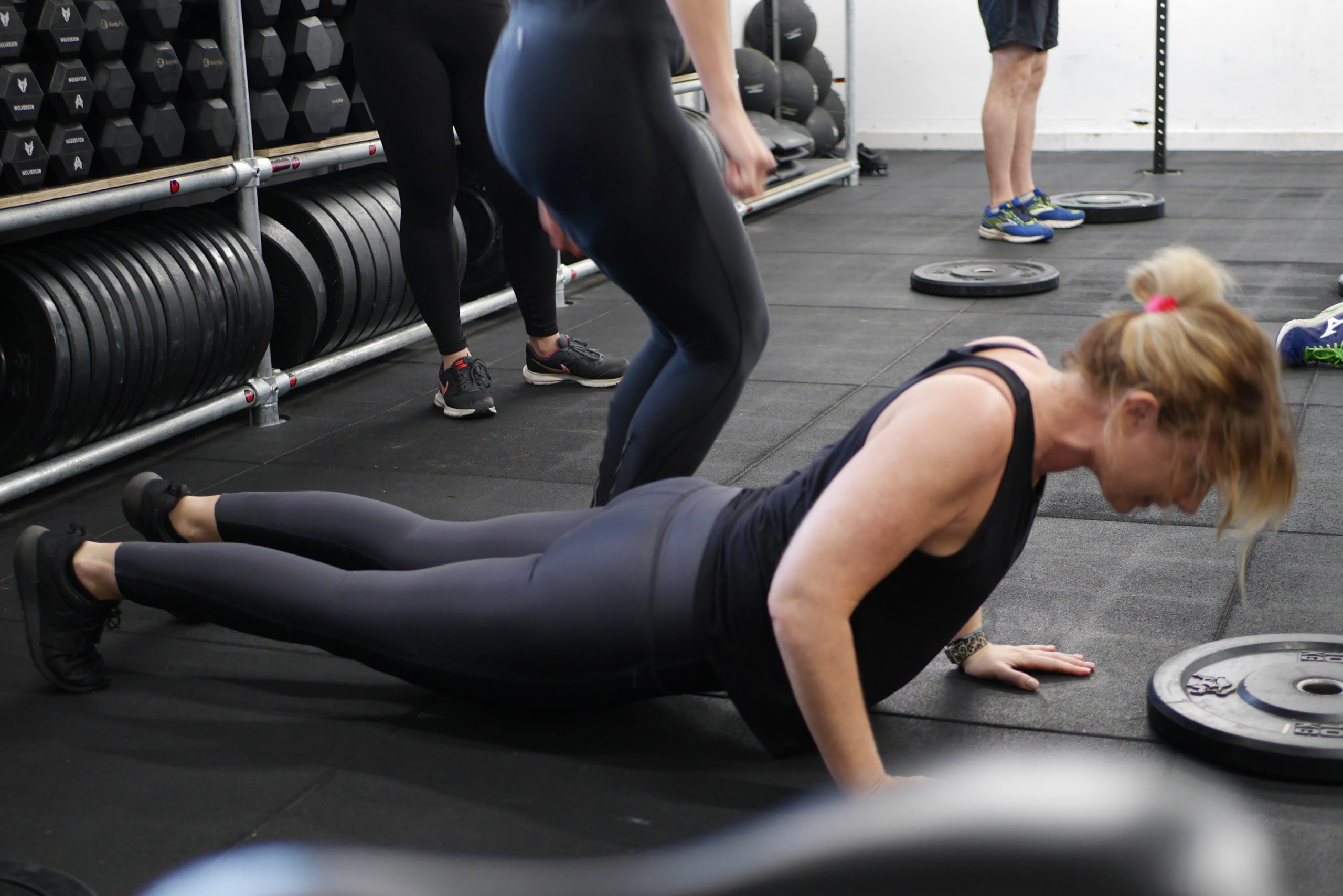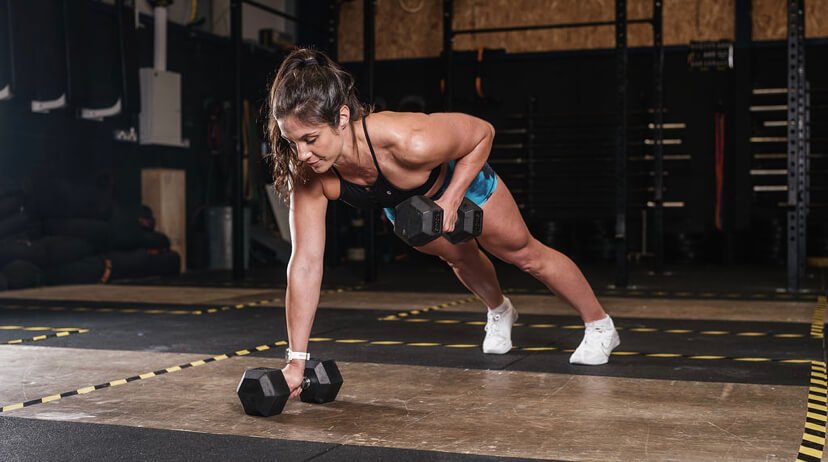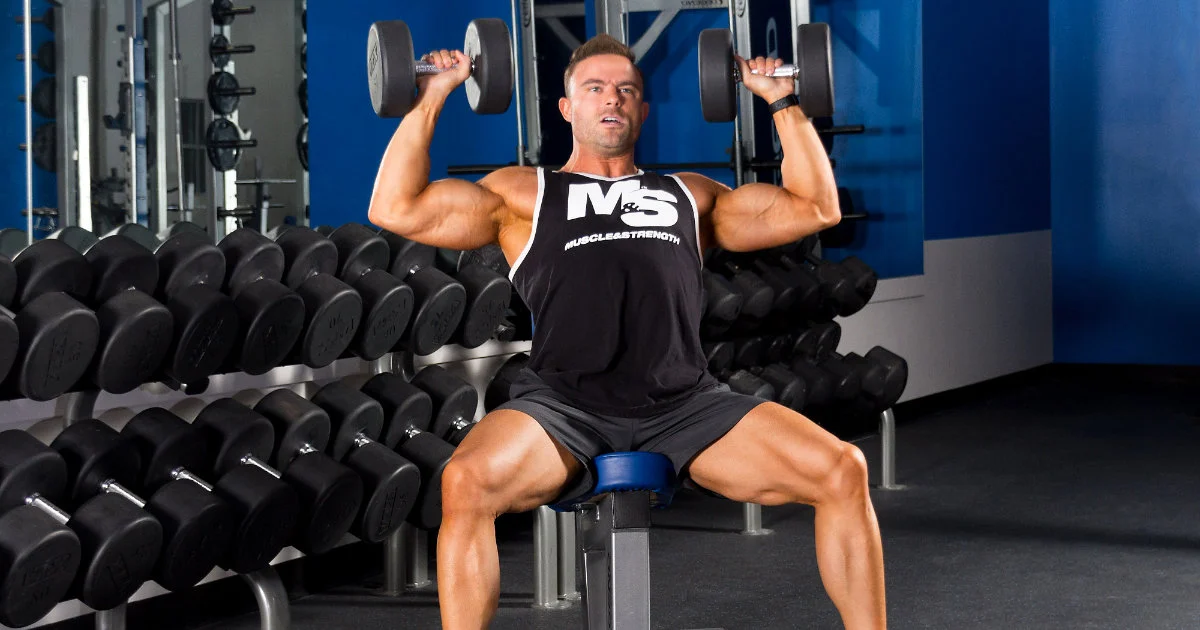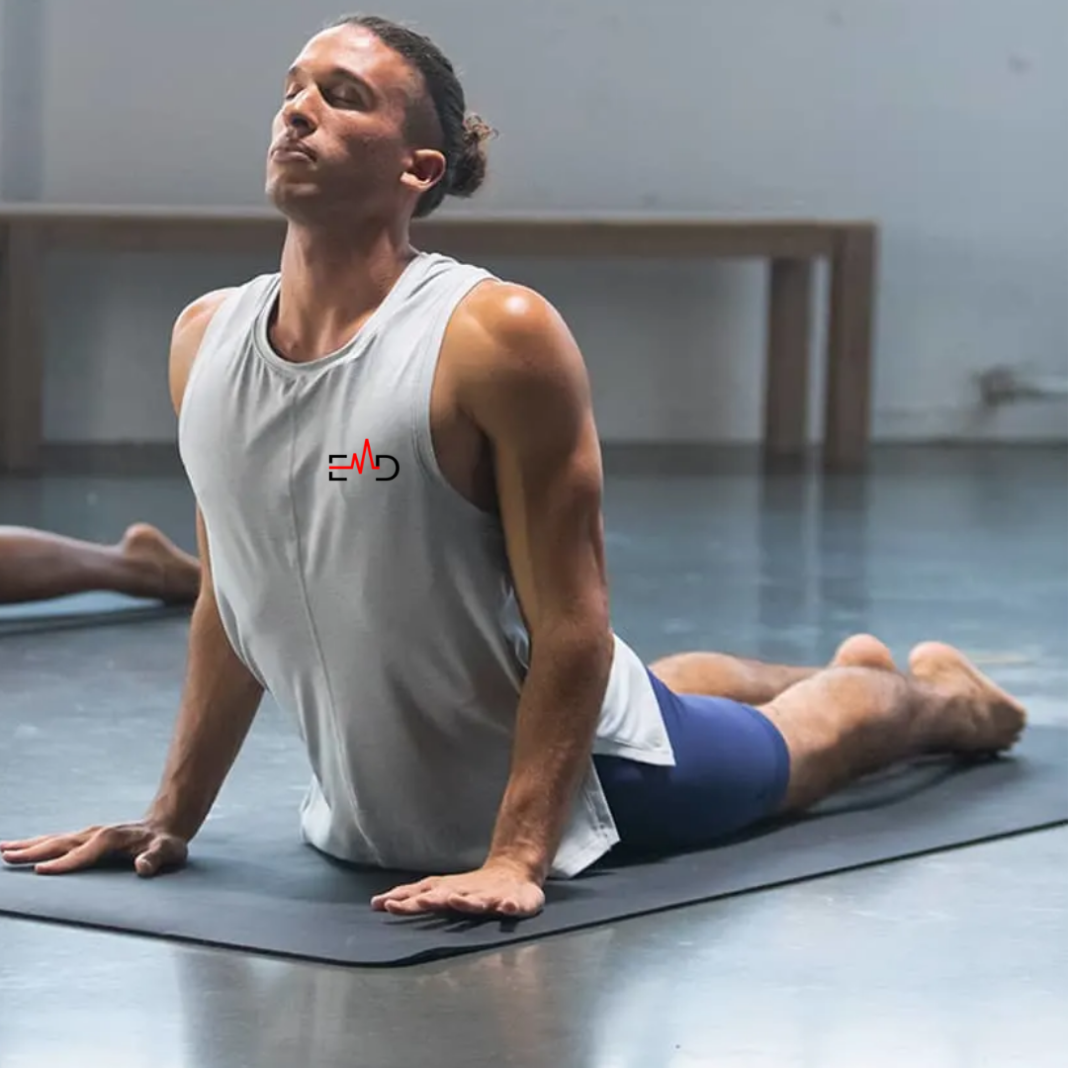Exercise Daily – Welcome to the exciting world of CrossFit! If you’re new to this fitness phenomenon and eager to start, you’re in the right place. In this comprehensive guide, we’ll take you through the basics of CrossFit for Beginners, from what it is to how to embark on your CrossFit journey and achieve your fitness goals. So, let’s dive right in and explore the realm of CrossFit.
What Is CrossFit?
Before we get into the nitty-gritty, let’s uncover the essence of CrossFit. CrossFit is a high-intensity fitness program that combines elements of weightlifting, cardio, gymnastics, and more. It’s designed to improve overall fitness, focusing on functional movements and varied workouts to challenge your body uniquely.
1. The CrossFit Community
One of the captivating aspects of CrossFit is its strong sense of community. Discover how being part of a CrossFit gym can elevate your motivation and help you stay on track.
Getting Started with CrossFit
Are you ready to embark on your CrossFit journey? Getting started with CrossFit is an exciting step towards improving your fitness and overall well-being.
1. Finding the Right CrossFit Gym
Choosing the right CrossFit gym, often called a “box,” is a crucial first step. Here’s what you need to consider:
i. Location
Discover a CrossFit gym that is conveniently located for you. The closer it is to your home or workplace, the more likely you will stay committed to your workouts.
ii. Experienced Coaches
Ensure the gym has certified and experienced coaches who can provide proper guidance and ensure your safety during workouts.
iii. Community Atmosphere
Part of what makes CrossFit unique is its sense of community. Look for a gym that fosters a supportive and motivating environment where you can thrive.
iv. Trial Classes
Many CrossFit gyms offer trial classes or a free introductory session. Take advantage of these opportunities to see if the gym aligns with your goals and preferences.
2. Essential CrossFit Gear
To get started with CrossFit, you’ll need some essential gear. Here’s a list of what you should consider:
i. Workout Attire
Invest in comfortable workout attire that allows for a wide range of motion. You’ll want clothes that wick away sweat and keep you cool during intense workouts.
ii. CrossFit Shoes
CrossFit-specific shoes offer the stability and support you need for various movements. They provide excellent grip and help prevent injuries.

CrossFit Workouts Demystified
CrossFit workouts, often called WODs (Workouts of the Day), are at the core of this high-intensity fitness program.
1. What Are WODs?
Defining WODs
WODs are the heart and soul of CrossFit. They are carefully designed workouts incorporating exercises, movements, and time or rep-based challenges. Each day, CrossFit gyms worldwide post a new WOD for their members to complete. These workouts are designed to be scalable, making them suitable for individuals of all fitness levels.
2. The Structure of a WOD
Time Domains
WODs often fall into specific time domains, such as:
- For Time: In this format, you aim to complete the prescribed exercises as quickly as possible.
- AMRAP (As Many Rounds/Reps as Possible): In AMRAP workouts, you perform a set of exercises repeatedly for a specified duration, aiming to complete as many rounds or repetitions as possible.
- EMOM (Every Minute on the Minute): EMOM workouts require you to perform a set of exercises within a minute and then rest for the remaining time in that minute. The cycle repeats for a designated number of minutes.
3. Exercises and Movements
WODs incorporate a wide range of exercises and movements, including:
- Weightlifting: Movements like deadlifts, squats, and clean and jerks.
- Gymnastics: Exercises like pull-ups, handstand push-ups, and muscle-ups.
- Cardio: Activities like running, rowing, and jumping rope.
- Functional Movements: Everyday actions like pushing, pulling, and lifting are key components of CrossFit.
4. Scaling WODs
One of the unique aspects of CrossFit is its scalability. Regardless of your fitness level or experience, you can participate in WODs. Here’s how scaling works:
i. Weight Scaling
Beginners often start with lighter weights to focus on proper form and technique. As you gain strength and confidence, you can gradually increase your weight.
ii. Movement Modifications
If you’re not yet proficient in a particular movement, coaches can provide alternatives that allow you to work on similar muscle groups while developing the necessary skills.
iii. Intensity Adjustment
The intensity of a WOD can be adjusted by modifying the number of repetitions, rounds, or duration. This ensures that the workout remains challenging yet achievable for you.
5. The Challenge and Variety
One of the captivating aspects of CrossFit is the element of surprise. You never know what the WOD will entail, which keeps things exciting and prevents boredom. It also encourages adaptability and a well-rounded approach to fitness.
6. Progress and Tracking
To gauge your progress in CrossFit, many athletes keep records of their WOD performances. Tracking your times, weights, and repetitions allows you to see how far you’ve come and set new goals for improvement.

Safety First
When you embark on your CrossFit journey, safety should always be your top priority. CrossFit is known for its high-intensity workouts, and while they can be incredibly effective, they also come with the potential for injuries.
1. Consult with a Healthcare Professional
Before you start any new fitness program, including CrossFit, it’s crucial to consult with a healthcare professional, especially if you have any pre-existing medical conditions or injuries. They can provide valuable guidance on whether CrossFit suits you and if there are any specific precautions you should take.
2. Listen to Your Body
CrossFit workouts can be intense, and it’s essential to listen to your body. Please pay attention to any pain or discomfort, and don’t push through it. If something doesn’t feel right, it’s better to scale back or modify the workout rather than risk injury.
3. Proper Warm-Up and Cool Down
Always start your CrossFit sessions with a proper warm-up. Warm-up exercises prepare your muscles and joints for the upcoming intensity. Include dynamic stretches, light cardio, and mobility exercises in your warm-up routine.
Similarly, don’t skip the cool-down and stretching portion after your workout. Stretching helps improve flexibility and reduces the risk of muscle soreness.
4. Master Proper Form and Technique
One of the most critical aspects of CrossFit safety is mastering the proper form and technique for each exercise and movement. Incorrect forms can lead to injuries. Work closely with your CrossFit coach to ensure you perform movements correctly. Don’t rush to lift heavy weights or perform advanced exercises until you have a solid foundation.
5. Gradual Progression
Avoid the temptation to overexert yourself, especially as a beginner. CrossFit is about gradual progression. Start with lighter weights and simpler movements, and increase the intensity as you become more experienced and confident.
6. Stay Hydrated
Proper hydration is essential during CrossFit workouts. Dehydration can lead to decreased performance and increase the risk of injuries. Drink water before, during, and after your workouts to stay hydrated.
7. Rest and Recovery
Don’t underestimate the importance of rest and recovery. CrossFit workouts can be demanding on your body. Adequate sleep, nutrition, and rest days are crucial for muscle recovery and overall well-being.

CrossFit Nutrition
CrossFit is all about pushing your limits, and to do that effectively, you need the right fuel for your body.
1. The Importance of Nutrition
CrossFit workouts are intense and demanding, making proper nutrition a crucial part of your journey. The right nutrition not only helps you perform better during workouts but also aids in muscle recovery and overall health.
2. Pre-Workout Nutrition
i. Carbohydrates
Before hitting the gym, indulge in carbohydrates. They provide your body with the necessary energy for intense CrossFit workouts. Opt for complex carbohydrates like whole grains, fruits, and vegetables.
ii. Protein
Protein is essential for muscle repair and growth. Include a source of lean protein in your pre-workout meal, such as chicken, fish, or plant-based options like tofu or beans.
iii. Hydration
Stay adequately hydrated before your workout. Dehydration can lead to decreased performance and fatigue. Drink water or a sports drink containing electrolytes.
3. Post-Workout Nutrition
i. Protein for Recovery
After your CrossFit session, prioritize protein to aid in muscle recovery. A protein shake or a meal containing lean protein sources like chicken or fish is ideal.
ii. Carbohydrates for Glycogen Replenishment
Replenishing glycogen stores is crucial after intense exercise. Consume carbohydrates like rice, pasta, or sweet potatoes to restore energy levels.
iii. Healthy Fats
Include sources of healthy fats, such as avocados or nuts, in your post-workout meal. These fats support overall health and can help reduce inflammation.
4. Meal Timing
i. Timing Matters
Eating at the right times can enhance your CrossFit performance. Have a balanced meal 1-2 hours before your workout to ensure you have enough energy. Post-workout, refuel within 30 minutes to an hour for optimal recovery.
5. Hydration Matters
Proper hydration is essential for CrossFit’s success. Dehydration can lead to decreased performance and an increased risk of injury. Drink water throughout the day, and consider a sports drink during particularly intense workouts to replace lost electrolytes.
6. Supplements
While whole foods should be your primary source of nutrition, supplements can complement your diet. Consider supplements like protein powder, creatine, or branched-chain amino acids (BCAAs) if they align with your goals and dietary needs.

CrossFit Progression
CrossFit is all about progress. As you dive deeper into this fitness program, you must track your journey to ensure that you’re continually challenging yourself and achieving your fitness goals.
1. Tracking Your Progress
i. Keep a Workout Journal
One of the most effective ways to monitor your CrossFit progression is by keeping a workout journal. Record the details of each workout, including the exercises, weights lifted, repetitions completed, and your time or scores for WODs. Tracking your performance over time provides valuable insights into your strengths and areas for improvement.
ii. Benchmark Workouts
CrossFit includes benchmark workouts like “Fran,” “Grace,” and “Murph.” These workouts serve as standards to measure your progress. Revisit benchmark workouts periodically to assess how much you’ve improved.
iii. Measurements and Body Composition
Take measurements of your body, such as weight, body fat percentage, and measurements of key areas (e.g., waist, hips, arms). These metrics can help you track changes in your body composition and overall fitness.
iv. Set Specific Goals
Establish clear and achievable fitness goals. Whether improving your deadlift max, mastering a specific gymnastic movement, or completing a WOD in a certain time, having specific goals gives you something to work towards.
2. Measuring Strength and Performance
i. Strength Gains
CrossFit emphasizes functional movements and strength development. Track your progress in squats, deadlifts, and clean and jerks to see how your strength is improving.
ii. Gymnastic Movements
Monitor your progress in gymnastic movements, such as pull-ups, handstand push-ups, and muscle-ups. Recording the number of repetitions or mastering more challenging variations is a sign of growth.
iii. WOD Times and Scores
For WODs, strive to improve your times or scores consistently. Even small reductions in your times or the ability to complete more rounds/repetitions indicate progress.
3. Adjusting and Scaling
i. Scaling Up
As you become more experienced and achieve your goals, you must continue challenging yourself. Gradually increase the weights and intensities of your workouts to ensure you’re progressing.
ii. Scaling Down (When Necessary)
On the flip side, don’t be afraid to scale down workouts if needed. Whether due to injury, fatigue, or other factors, scaling down can prevent setbacks and promote safe progression.

The Role of Mental Toughness
1. Understanding Mental Toughness
Mental toughness is the ability to persevere, stay focused, and maintain determination despite adversity. In CrossFit, mental toughness can be the difference between pushing through a grueling workout and giving up.
2. The Mind-Muscle Connection
CrossFit workouts often push you to your limits, and your mind plays a significant role in your performance. Developing a strong mind-muscle connection is essential for success.
3. Building Mental Toughness
i. Embrace Discomfort
CrossFit is designed to take you out of your comfort zone. Embrace Discomfort as an opportunity to grow. Recognize that progress often occurs when you’re pushing your limits.
ii. Set Realistic Expectations
While pushing yourself is essential, setting realistic expectations is equally crucial. Understand that not every workout will result in a personal record. Accepting this can help reduce frustration and keep you motivated.
iii. Positive Self-Talk
Your inner dialogue matters. Replace negative self-talk with positive affirmations. Encourage yourself during tough moments, and remind yourself of your goals and achievements.
iv. Visualization
Visualization is a powerful tool. Before a workout, visualize yourself succeeding, completing each movement precisely, and crossing the finish line strong. This mental rehearsal can boost confidence and performance.
4. Overcoming Mental Challenges
i. Fear of Failure
Fear of failure is common in CrossFit. It’s essential to reframe failure as a stepping stone to success. Every missed lift or incomplete workout is an opportunity to learn and improve.
ii. Staying Present
During intense workouts, it’s easy to become overwhelmed by thoughts of fatigue or the number of reps remaining. Practice staying present by focusing on one rep at a time or one step in a run. This mindfulness can help you tackle workouts more effectively.
iii. Channeling Nerves
Nervousness before a workout is natural. Rather than letting it hinder you, channel that energy into enthusiasm and determination. Use the adrenaline to your advantage.

Common CrossFit Myths
CrossFit has gained immense popularity in the fitness world, but along with its rise to fame, various myths and misconceptions have emerged.
Myth 1: CrossFit Is Only for Elite Athletes
Debunked: CrossFit Is for Everyone
One of the most prevalent myths is that CrossFit is only for elite athletes or those already exceptionally fit. In reality, CrossFit is scalable and adaptable to all fitness levels. Workouts can be modified to suit beginners, and everyone progresses at their own pace. CrossFit is inclusive and welcomes individuals from various backgrounds and fitness levels.
Myth 2: CrossFit Is Dangerous
Debunked: Safety Is a Priority
Safety is paramount in CrossFit gyms. Certified coaches guide proper form and technique, and workouts are designed with safety in mind. Like any sport or fitness activity, injuries can occur if proper form is not maintained. However, with attentive coaching and personal responsibility, CrossFit can be a safe and effective fitness program.
Myth 3: CrossFit Is Only About Lifting Heavy Weights
Debunked: CrossFit Is Varied
While CrossFit includes weightlifting as a component, it is not solely about lifting heavy weights. CrossFit incorporates a wide variety of movements and exercises, including cardio, gymnastics, bodyweight exercises, and functional movements. The emphasis is on overall fitness and functional strength, not just lifting heavy weights.
Myth 4: CrossFit Leads to Bulky Muscles for Women
Debunked: CrossFit Promotes Lean and Functional Bodies
CrossFit workouts improve overall fitness and create lean, functional bodies. Women participating in CrossFit typically develop strength and muscle tone without becoming overly bulky. The idea that CrossFit automatically leads to bulky muscles is a misconception.
Myth 5: CrossFit Is All About Competition
Debunked: CrossFit Is About Personal Progress
While CrossFit does offer competitive opportunities, the primary focus is on personal progress and improvement. Many CrossFit athletes compete against themselves, aiming to beat their previous records and reach their own fitness goals. Competition is optional, and not all CrossFit participants engage in it.
Myth 6: CrossFit Is a Cult
Debunked: CrossFit Is a Supportive Community
CrossFit’s strong sense of community can sometimes be misconstrued as a cult-like atmosphere. In reality, CrossFit gyms foster a supportive and motivating environment where members encourage each other to succeed. The community aspect is a key factor in CrossFit’s appeal.
Myth 7: CrossFit Is Only Intense and Extreme
Debunked: CrossFit Is Scalable
CrossFit workouts can be intense, but they are also scalable. Intensity levels can be adjusted to match an individual’s fitness level. CrossFit is not solely about extreme workouts; it’s about pushing your limits in a safe and controlled manner.
Myth 8: CrossFit Is Too Expensive
Debunked: Affordable Options Exist
While some CrossFit gyms may have higher membership fees, there are also affordable options available. Many CrossFit facilities offer various membership plans and discounts, making it accessible to various budgets.

Conclusion
Congratulations! You’ve taken your first steps into the world of CrossFit. By now, you should have a solid understanding of what CrossFit is, how to get started, and how to progress on your fitness journey. Remember, consistency is key, and with dedication and hard work, you can achieve incredible results in CrossFit.
FAQs (CrossFit for Beginners: Everything You Need to Know)
Q: Is CrossFit suitable for beginners with no prior fitness experience?
Absolutely! CrossFit can be scaled to accommodate individuals of all fitness levels, including beginners.
Q: How often should I do CrossFit workouts?
It depends on your fitness goals and your body’s recovery capacity. Starting with 3-4 times a week is a good approach, and you can adjust as needed.
Q: Will CrossFit make me bulky?
CrossFit is designed to improve overall fitness and can help you build muscle, but it won’t necessarily make you bulky unless that’s your specific goal.
Q: What if I have a pre-existing injury or medical condition?
It’s crucial to consult with a healthcare professional before starting CrossFit. They can guide exercises that are safe for your condition.
Q: Can I do CrossFit at home, or do I need to join a gym?
While some CrossFit workouts can be done at home, joining a CrossFit gym is recommended to access coaching, equipment, and the supportive community.




